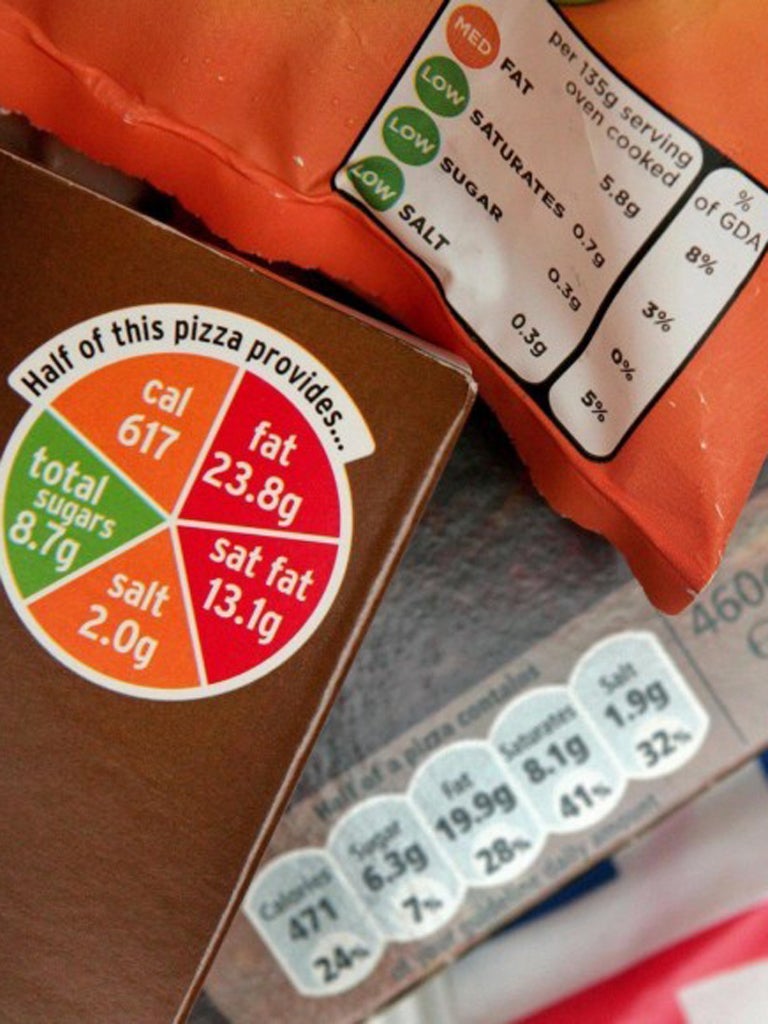End to calorie confusion as standardised food labelling system is announced for supermarkets

Your support helps us to tell the story
From reproductive rights to climate change to Big Tech, The Independent is on the ground when the story is developing. Whether it's investigating the financials of Elon Musk's pro-Trump PAC or producing our latest documentary, 'The A Word', which shines a light on the American women fighting for reproductive rights, we know how important it is to parse out the facts from the messaging.
At such a critical moment in US history, we need reporters on the ground. Your donation allows us to keep sending journalists to speak to both sides of the story.
The Independent is trusted by Americans across the entire political spectrum. And unlike many other quality news outlets, we choose not to lock Americans out of our reporting and analysis with paywalls. We believe quality journalism should be available to everyone, paid for by those who can afford it.
Your support makes all the difference.Health campaigners today welcomed a new Government-backed food labelling system which will standardise the baffling array of front-of-pack designs which have confused shoppers for years.
All the major supermarket chains bar Iceland have indicated that they will use the scheme - announced by the Department of Health this morning - on everything from breakfast cereals to pizzas from next year.
Under the scheme, colours will show ‘high’, ‘medium’ and ‘low’ levels of fat, saturated fat, salt and sugar as well as the percentages of daily recommended of the nutrients found in each product.
The scheme is effectively a compromise between the coloured ‘traffic light’ system developed by the Food Standards Agency and adopted by most supermarkets and the rival GDA (Guideline Daily Amount) favoured by some retailers and manufacturers.
Some chains such as Sainsbury’s Marks & Spencer and Waitrose have put the FSA’s traffic light labels (showing red, amber and green for, respectively, high, medium and low levels of nutrients) on products for years, but others such as Tesco resisted the scheme and used GDA labels.
Public Health Minister, Anna Soubry, announcing the “hybrid” scheme, said: “The UK already has the largest number of products with front of pack labels in Europe but research has shown that consumers get confused by the wide variety of labels used.
“By having a consistent system we will all be able to see at a glance what is in our food. This will help us all choose healthier options and control our calorie intake.”
Peter Hollins, chief executive of the British Heart Foundation, said: “This is a quantum leap for public health and the result of tireless work by health campaigners and positive action by our governments.”
Helen Davidson, chairman of the British Dietetic Association Chairman, hailed “a significant step forward.” She said: “Consumers need a quick understanding of the relative healthiness of a product.”
Which?’s executive director, Richard Lloyd, said: “With levels of obesity and diet-related disease on the increase it's vitally important that people know what's in their food so that they can make an informed choice.”
He continued: “Which? has campaigned for years for traffic light labelling so we're pleased the Government has now decided to support this and that every major supermarket, except Iceland, is committed to the scheme.
“The Government now needs to press food manufacturers to do the same and make sure that labels are consistent and based on strong, independent criteria, so that consumers can easily compare products.”
Talks between the Department of Health and the food industry to determine what counts as high, medium and low levels of nutrients will be held this week.
Join our commenting forum
Join thought-provoking conversations, follow other Independent readers and see their replies
Comments